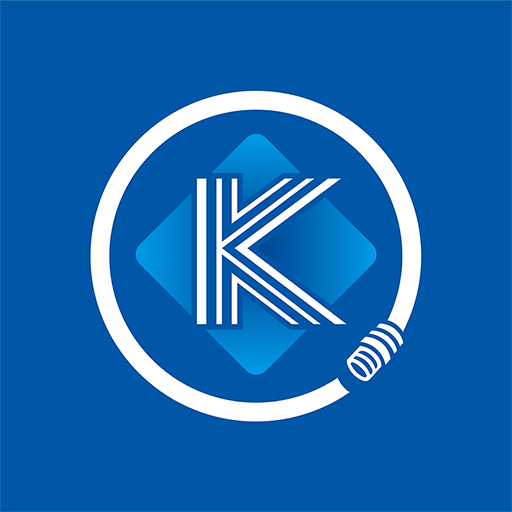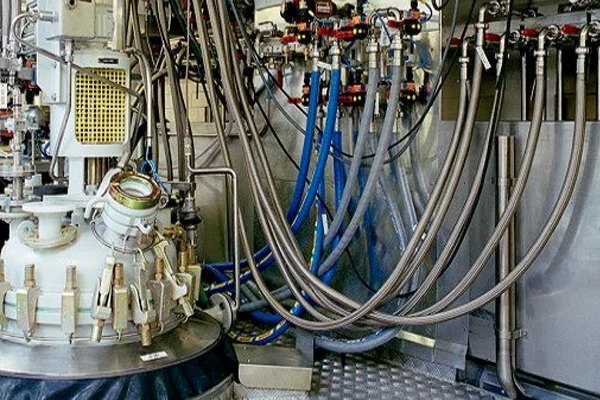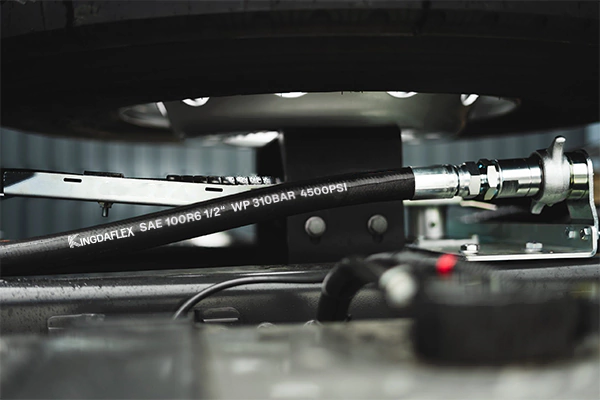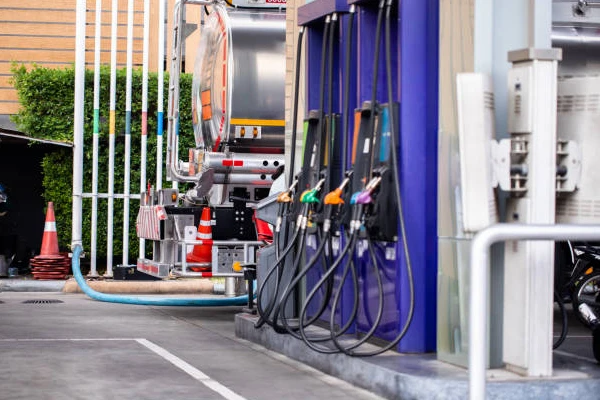For professionals and businesses, the integrity of a fluid transfer system is non-negotiable. This guide will provide a comprehensive overview of how to correctly cut PTFE hoses, a crucial skill for ensuring a clean, leak-free, and high-performance assembly. Mastering this technique is vital for operational efficiency and safety.
Improperly prepared hoses can lead to costly leaks and premature system failure, impacting your business’s productivity and reputation. By understanding the proper tools and methodology, you can guarantee a perfect cut every time, ensuring your assemblies meet the highest industry standards for quality and reliability.
What are PTFE Hoses?
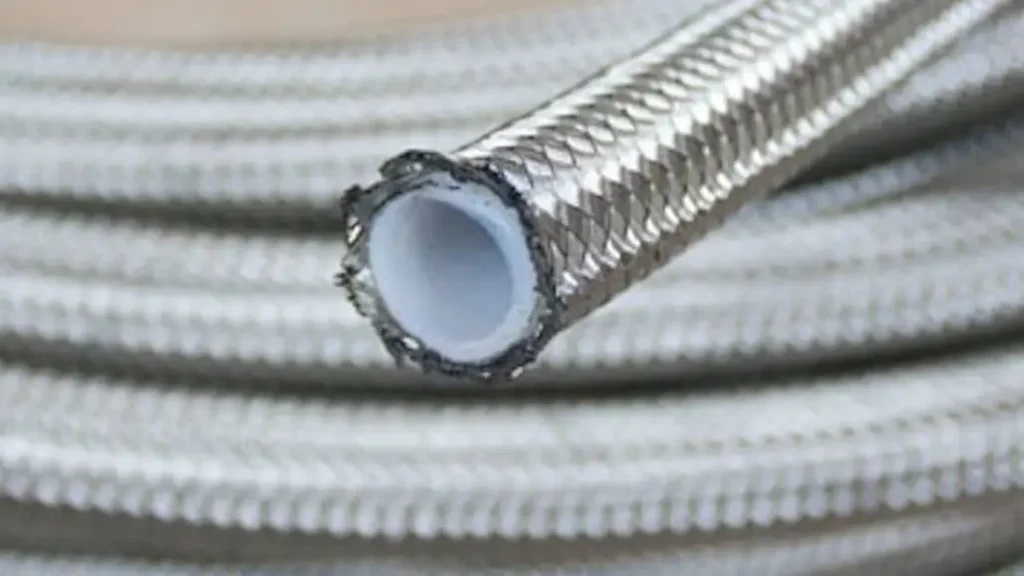
A PTFE hose is a type of industrial hose with an inner core made from PTFE (Polytetrafluoroethylene), a synthetic fluoropolymer commonly known by the brand name Teflon. This core is typically reinforced with an outer layer of braided stainless steel or synthetic fiber. The defining characteristics of a PTFE hose are its exceptional chemical and heat resistance.
The PTFE inner core is highly inert, making it compatible with a vast range of aggressive chemicals, acids, and solvents that would degrade other types of rubber or plastic hoses. Its smooth, non-stick surface also prevents material buildup, ensuring a clean and consistent flow. The outer braided layer provides the necessary strength to withstand high pressures, making the hose incredibly durable and reliable for demanding applications in industries such as chemical manufacturing, aerospace, and food processing.
- Chemical Resistance: PTFE is inert to almost all industrial chemicals, acids, and solvents.
- Temperature Resistance: It can withstand a wide temperature range, from cryogenic lows to extreme highs.
- Non-Stick Surface: The smooth bore prevents material buildup, ensuring consistent flow and easy cleaning.
- Durability: The outer braiding provides high-pressure resistance and physical protection against abrasion and kinking.
- Low Permeation: The material has a very low permeability, making it ideal for containing gases and volatile liquids.
How to Cut PTFE Hose?
We understand that getting a clean cut on a PTFE hose is essential for a leak-free assembly. Improper cutting can damage the stainless steel braiding and prevent the fitting from sealing correctly. Here is a step-by-step guide to help you achieve a perfect cut.
Step 1: We Secure the PTFE Hose
First, we firmly clamp the PTFE hose in a vise. We use soft jaws or padded clamps to avoid damaging the outer stainless steel braiding. We position the PTFE hose so the section to be cut is easily accessible and secure.
This stability is crucial for ensuring a straight and clean cut. A loose PTFE hose can shift during the cutting process, resulting in a crooked or uneven end, which will compromise the integrity of the final connection and cause a leak.
Step 2: We Wrap the Cut Area
To prevent the stainless steel braiding of the PTFE hose from fraying, we tightly wrap the cut line with electrical tape. We make sure the tape is wrapped multiple times and completely covers the area where the cut will be made.
This simple step acts as a temporary binder, holding the individual strands of the braid in place. It ensures the cut remains clean and the braiding does not unravel, which is a common issue that can make fitting assembly difficult.
Step 3: We Choose the Right Tool
We select the correct tool for the job. For a manual cut, a sharp, fine-toothed hacksaw is recommended. A specialized abrasive wheel saw can also be used for a faster, more precise cut on a larger scale.
Using the wrong tool, such as a dull saw or a standard tubing cutter, can crush the PTFE hose or fray the braiding. The right tool ensures a clean, straight cut that is vital for a proper seal.
Step 4: We Make a Straight Cut
We carefully begin sawing through the PTFE hose, applying light, steady pressure. We ensure our saw blade is perpendicular to the hose to maintain a straight cut. We saw through both the braiding and the PTFE core at a consistent pace.
A perfectly straight cut is non-negotiable for a leak-proof connection. Any angle or unevenness will prevent the fitting from seating correctly, leading to a compromised seal and a high risk of failure under pressure.
Step 5: We Remove the Tape
Once the cut is complete, we carefully unwrap and remove the electrical tape. We inspect the cut end of the PTFE hose to confirm that the stainless steel braiding is intact and has not frayed. A clean cut will have no loose strands.
If any small, stray strands of braiding are present, we can carefully trim them with a pair of sharp wire cutters. The goal is to have a completely clean edge that won’t interfere with the fitting.
Step 6: We Prepare the Fitting
Before attaching the fitting, we ensure that both the cut end of the PTFE hose and the fitting itself are completely clean and free of any debris. Any particles can compromise the integrity of the seal.
A clean connection is a reliable one. We inspect the inside of the fitting and the PTFE hose for any metal shavings or contaminants from the cutting process. We use a small brush or compressed air to clean them thoroughly.
Step 7: We Assemble the PTFE Hose
We slide the socket of the fitting over the PTFE hose. Then, we carefully thread the nipple into the hose end. We tighten the fitting with the appropriate wrenches until it is secure. We ensure there is no binding or cross-threading during this final assembly step.
Proper assembly guarantees the PTFE hose is securely connected to the fitting, completing the process. Once tightened, the hose is ready for installation, providing a reliable and leak-proof solution for your fluid transfer needs.
When to Cut PTFE Hoses?
Cutting a PTFE hose should only be performed when you have the correct tools, and the exact required length has been measured and confirmed for your specific application. It’s a critical step that must be done with precision, as a mistake can render the hose unusable and lead to costly material waste.
You should cut the hose after all other system components are in place and their final positions are determined, which ensures the length is perfect and accounts for any bends or routing complexities. A fresh cut is also important for a proper, clean seal with the end fittings, so cutting should be one of the final steps before assembly.
- When you have the right tools: Only cut a PTFE hose when you have a specialized hose cutter or a fine-toothed hacksaw and a vise to ensure a clean, non-frayed cut.
- After final measurements: The hose should be cut to length only after you have measured the exact run in your application, accounting for bends and turns.
- Before fitting assembly: A fresh, clean cut is essential for a proper seal, so it should be done right before you assemble the end fittings.
- For custom projects: Cutting is necessary for creating custom hose assemblies tailored to unique systems, as off-the-shelf sizes may not fit.
Conclusion
In conclusion, precision cutting of PTFE hoses is a fundamental part of building a reliable fluid transfer system. A clean, non-frayed cut is essential for a secure, leak-free fitting, which is paramount for operational safety and preventing costly downtime. Mastery of this skill ensures the long-term integrity of your industrial assemblies.
For professionals and businesses, the quality of your components directly affects your bottom line. We understand the importance of sourcing materials that are not only high-performing but also easy to work with. Trusting your supply chain is the first step toward delivering exceptional results to your clients.
As a leading manufacturer, we provide bulk PTFE hoses engineered for optimal performance and easy fabrication. For all your wholesale PTFE hose needs, rely on Kingdaflex. We are committed to supplying durable, high-quality hoses that streamline your production process and ensure your finished products are built to last.

